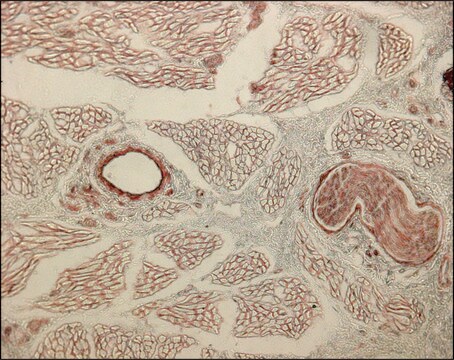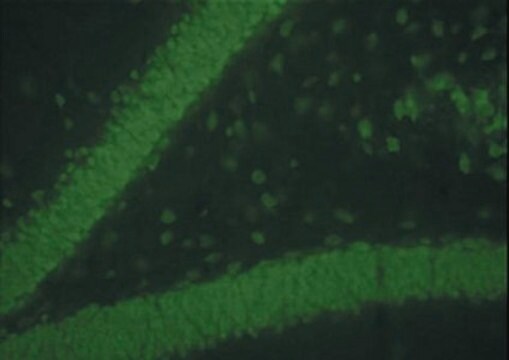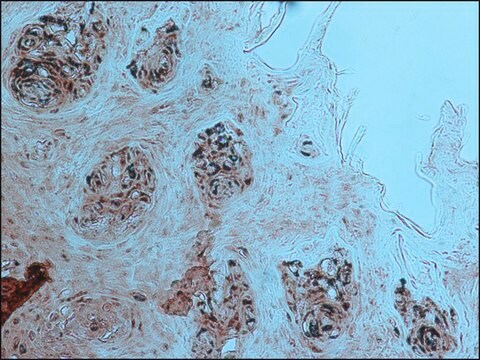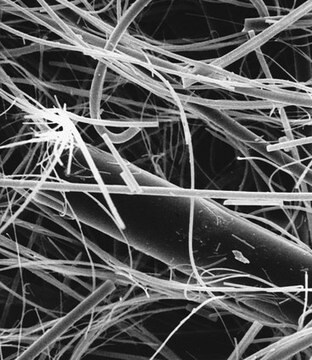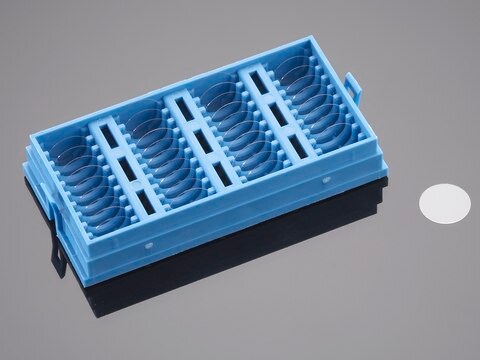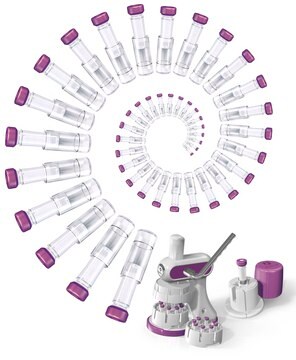MAB1430
Anti-Collagen Type IV Antibody, clone 24.12.8 (PHM-12)
clone 24.12.8 (PHM-12), Chemicon®, from mouse
Autenticatiper visualizzare i prezzi riservati alla tua organizzazione & contrattuali
About This Item
Codice UNSPSC:
12352203
eCl@ss:
32160702
NACRES:
NA.41
Prodotti consigliati
Origine biologica
mouse
Livello qualitativo
Forma dell’anticorpo
purified immunoglobulin
Clone
24.12.8 (PHM-12), monoclonal
Reattività contro le specie
human
Produttore/marchio commerciale
Chemicon®
tecniche
immunohistochemistry (formalin-fixed, paraffin-embedded sections): suitable
Isotipo
IgG1
N° accesso UniProt
Condizioni di spedizione
wet ice
modifica post-traduzionali bersaglio
unmodified
Descrizione generale
BIOCHEMISTRY:
p I = 5.5
p I = 5.5
Specificità
MAB1430 provides a marker for an antigen known to be important in glomerular cell-matrix interactions, and should prove useful in research into the mechanisms involved in renal pathology. This antibody reacts with glomerular and tubular basement membranes in kidney as well as basal lamina of capillaries. It also labels mesangial cells and matrix within the glomerulus as well as basement membrane structures in all organs examined (Gusterson et al., 1984).
Immunogeno
Human glomeruli
Applicazioni
Detect Collagen Type IV using this Anti-Collagen Type IV Antibody, clone 24.12.8 (PHM-12) validated for use in IH, IH(P).
The antibody is suitable for use on both frozen and protease digested paraffin processed tissue.
SUGGESTED USAGE
Indirect immunoperoxidase staining - the final dilution will depend on the assay conditions and detection system employed. However, a dilution of at least 1:40 will be applicable to most commonly used systems.
Optimal working dilutions must be determined by the end user.
SUGGESTED USAGE
Indirect immunoperoxidase staining - the final dilution will depend on the assay conditions and detection system employed. However, a dilution of at least 1:40 will be applicable to most commonly used systems.
Optimal working dilutions must be determined by the end user.
Stato fisico
Format: Purified
Purified immunoglobulin presented as a liquid in phosphate buffered saline, pH 7.4, containing 0.2% bovine serum albumin and 0.1% sodium azide.
Stoccaggio e stabilità
Store at 2 to 8°C, for up to 6 months. For prolonged periods, store below -20°C in undiluted aliquots. AVOID REPEATED FREEZE/THAW CYCLES.
WARNING: The monoclonal reagent solution contains 0.1% sodium azide as a preservative. Due to potential hazards arising from the build up of this material in pipes, spent reagent should be disposed of with liberal volumes of water.
WARNING: The monoclonal reagent solution contains 0.1% sodium azide as a preservative. Due to potential hazards arising from the build up of this material in pipes, spent reagent should be disposed of with liberal volumes of water.
Altre note
Concentration: Please refer to the Certificate of Analysis for the lot-specific concentration.
Note legali
CHEMICON is a registered trademark of Merck KGaA, Darmstadt, Germany
Codice della classe di stoccaggio
12 - Non Combustible Liquids
Classe di pericolosità dell'acqua (WGK)
WGK 2
Punto d’infiammabilità (°F)
Not applicable
Punto d’infiammabilità (°C)
Not applicable
Certificati d'analisi (COA)
Cerca il Certificati d'analisi (COA) digitando il numero di lotto/batch corrispondente. I numeri di lotto o di batch sono stampati sull'etichetta dei prodotti dopo la parola ‘Lotto’ o ‘Batch’.
Possiedi già questo prodotto?
I documenti relativi ai prodotti acquistati recentemente sono disponibili nell’Archivio dei documenti.
Diffusible factors released by fibroblasts support epidermal morphogenesis and deposition of basement membrane components.
El Ghalbzouri, Abdoelwaheb and Ponec, Maria
Wound Repair and Regeneration, 12, 359-367 (2004)
Inflammation, immune reactivity, and angiogenesis in a severe combined immunodeficiency model of rheumatoid arthritis.
Davis, LS; Sackler, M; Brezinschek, RI; Lightfoot, E; Bailey, JL; Oppenheimer-Marks, N; Lipsky, PE
The American Journal of Pathology null
Invading squamous cell carcinoma can retain a basal lamina. An immunohistochemical study using a monoclonal antibody to type IV collagen.
Gusterson, B A, et al.
Laboratory Investigation; a Journal of Technical Methods and Pathology, 51, 82-87 (1984)
Production of monoclonal antibodies to fibronectin, type IV collagen and other antigens of the human glomerulus.
Hancock, W W, et al.
Pathology, 16, 197-206 (1984)
S E Aggrey et al.
Poultry science, 73(12), 1822-1828 (1994-12-01)
Records of 1,530 Japanese quail were used to estimate heritabilities and genetic correlations based on a derivative-free restricted maximum likelihood (REML) method with an animal model and ANOVA. The animal model included fixed effects of hatch and sex, random effects
Il team dei nostri ricercatori vanta grande esperienza in tutte le aree della ricerca quali Life Science, scienza dei materiali, sintesi chimica, cromatografia, discipline analitiche, ecc..
Contatta l'Assistenza Tecnica.